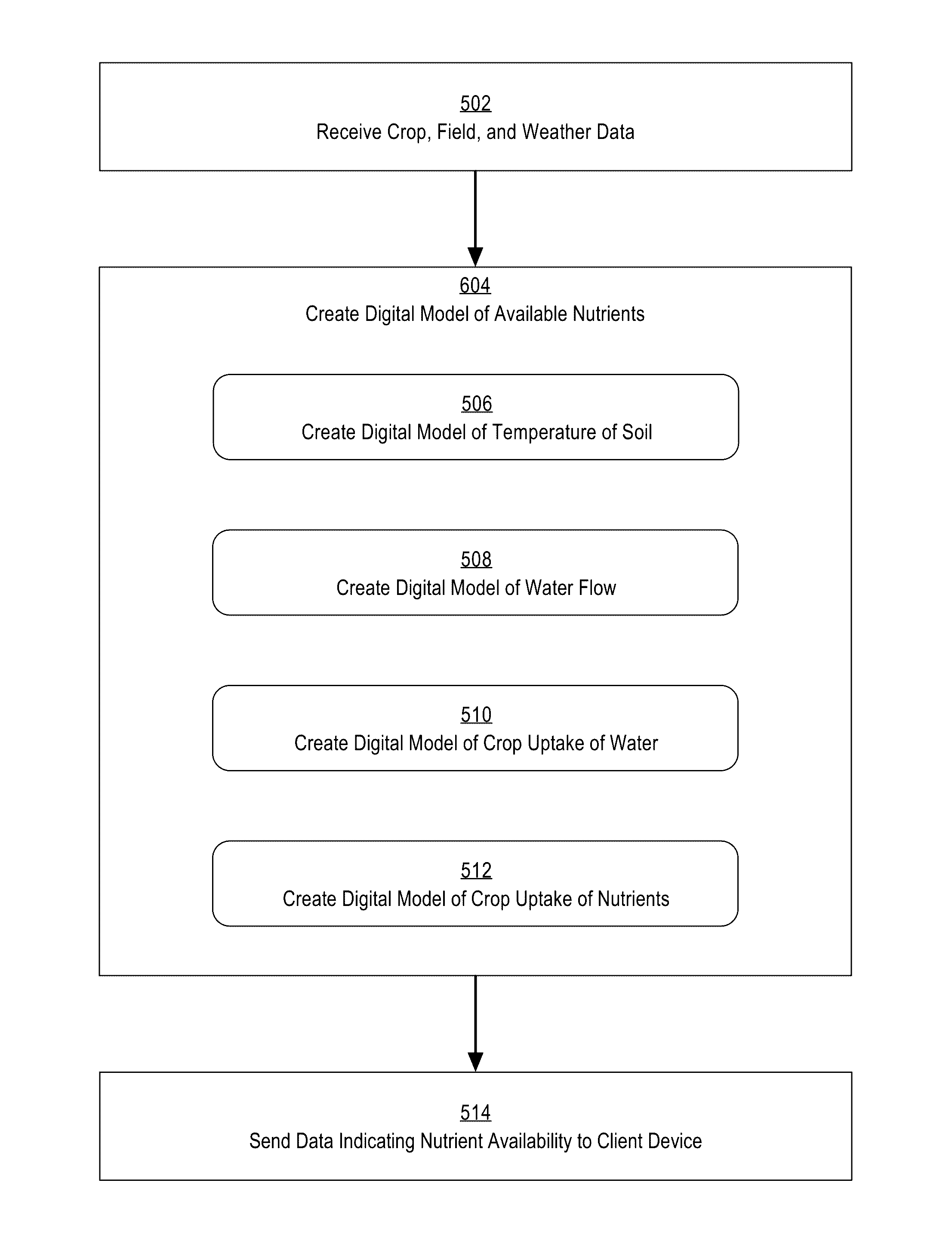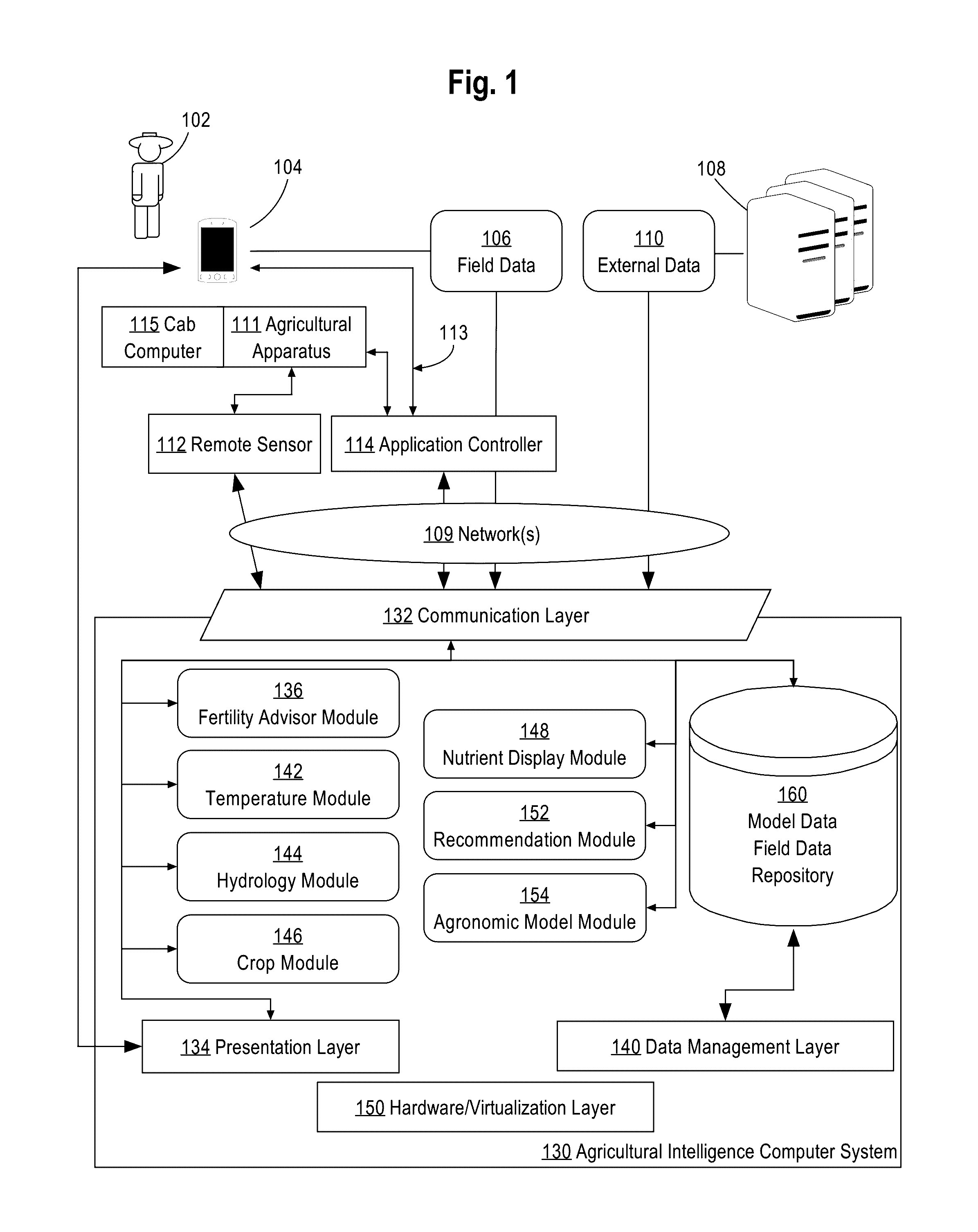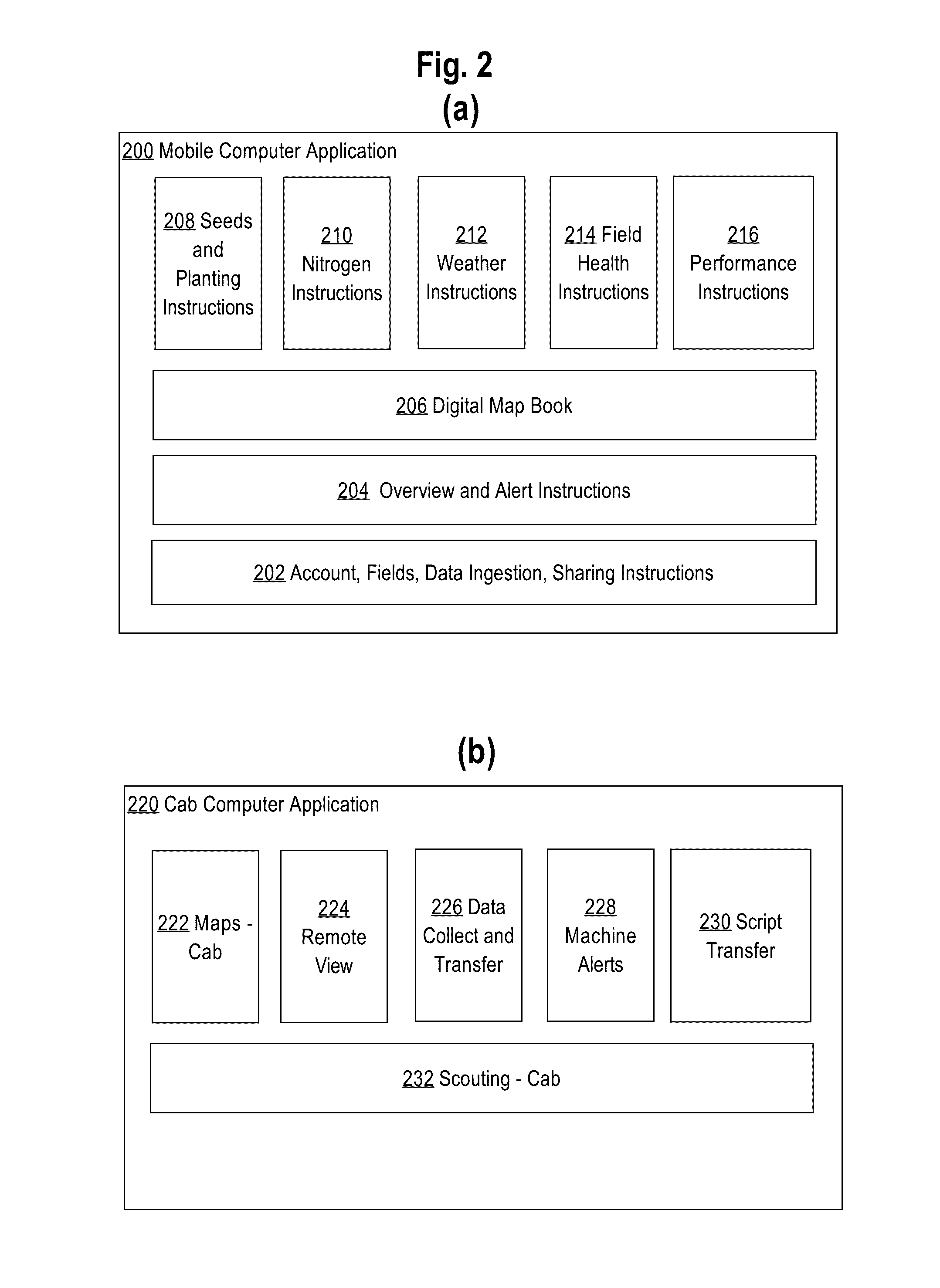Generating digital models of nutrients available to a crop over the course of the crop's development based on weather and soil data
a technology of digital models and crop nutrients, applied in computing models, knowledge representation, instruments, etc., can solve the problems of crop damage, crop loss, photosynthesis and dry matter accumulation,
- Summary
- Abstract
- Description
- Claims
- Application Information
AI Technical Summary
Benefits of technology
Problems solved by technology
Method used
Image
Examples
Embodiment Construction
[0020]In the following description, for the purposes of explanation, numerous specific details are set forth in order to provide a thorough understanding of the present disclosure. It will be apparent, however, that embodiments may be practiced without these specific details. In other instances, well-known structures and devices are shown in block diagram form in order to avoid unnecessarily obscuring the present disclosure. Embodiments are disclosed in sections according to the following outline:
[0021]1. GENERAL OVERVIEW
[0022]2. EXAMPLE AGRICULTURAL INTELLIGENCE COMPUTER SYSTEM[0023]2.1. STRUCTURAL OVERVIEW[0024]2.2. APPLICATION PROGRAM OVERVIEW[0025]2.3. DATA INGEST TO THE COMPUTER SYSTEM[0026]2.4. PROCESS OVERVIEW—AGRONOMIC MODEL TRAINING[0027]2.5. IMPLEMENTATION EXAMPLE—HARDWARE OVERVIEW
[0028]3. FERTILITY ADVISOR[0029]3.1. RECEIVED DATA[0030]3.2. NUTRIENT AVAILABILITY MODEL[0031]3.2.1. INITIAL NUTRIENT AVAILABILITY[0032]3.2.2. NUTRIENT GAINS AND LOSSES[0033]3.3. TEMPERATURE MODE...
PUM
 Login to View More
Login to View More Abstract
Description
Claims
Application Information
 Login to View More
Login to View More - R&D
- Intellectual Property
- Life Sciences
- Materials
- Tech Scout
- Unparalleled Data Quality
- Higher Quality Content
- 60% Fewer Hallucinations
Browse by: Latest US Patents, China's latest patents, Technical Efficacy Thesaurus, Application Domain, Technology Topic, Popular Technical Reports.
© 2025 PatSnap. All rights reserved.Legal|Privacy policy|Modern Slavery Act Transparency Statement|Sitemap|About US| Contact US: help@patsnap.com



